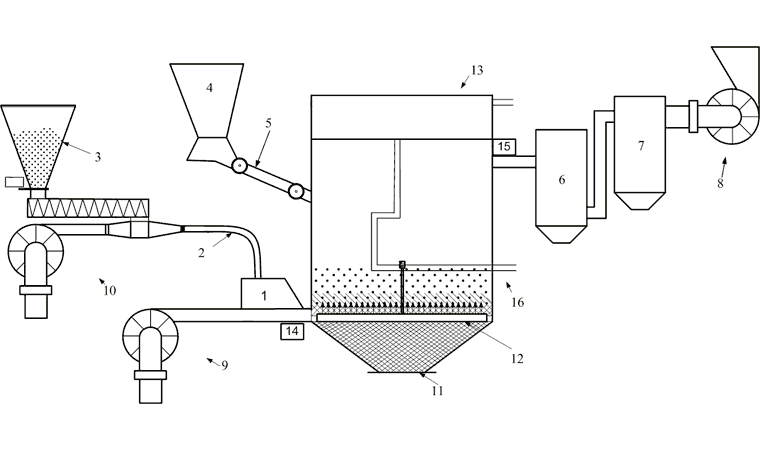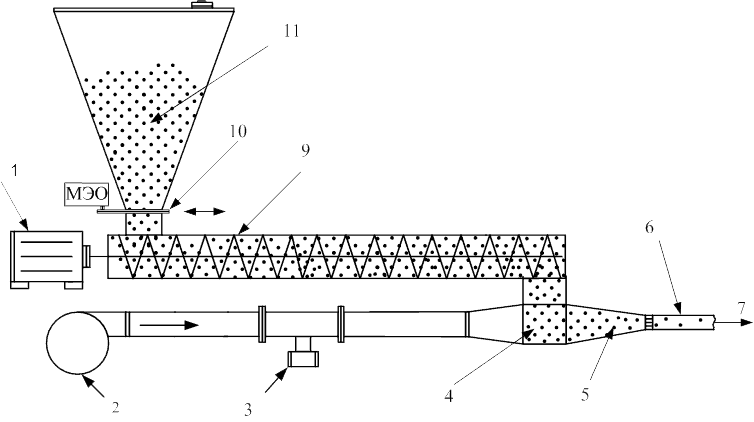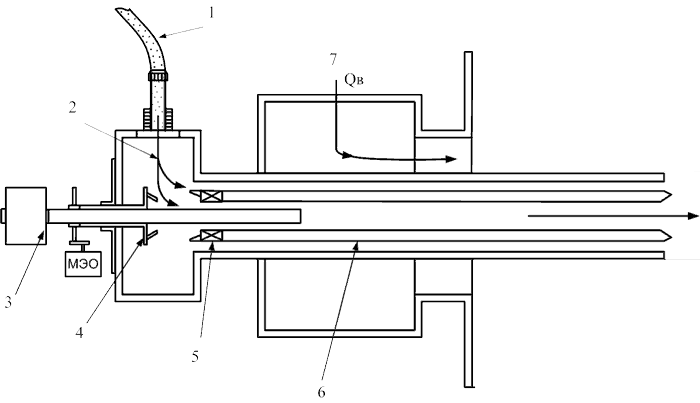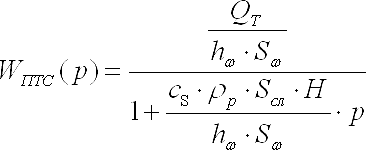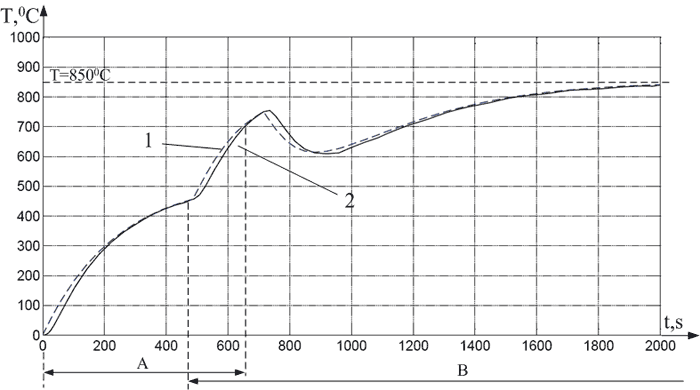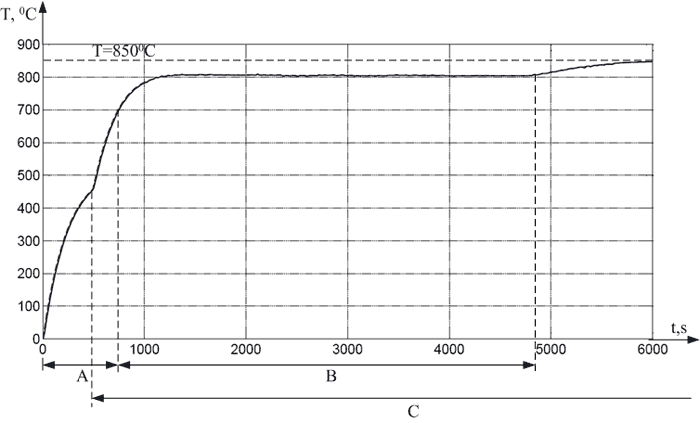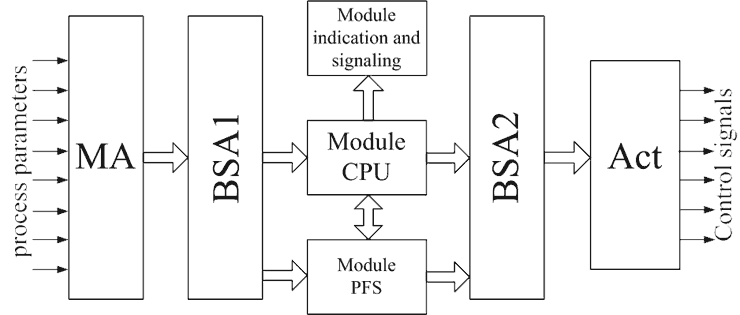| DonNTU | Master’s Portal | RUS | UKR | ENG |
 |
Dmitriy GavrilenkoFaculty: Computer Information Technologies and Automatics (CITA)Department: Mining Electrical Engineering and Automation behalf Ruvim Leybov (MEA)Speciality: Automatic Control of Technological Process (ACP)Theme of Master's Work: “Research and Development of the Device for Automatic Ignition of the Boiler Installation with Low-temperature Fluidized Bed”Scientific Supervisor: Ph.D. (in Engineering), Associate Professor of the MEA department Boris Gavrilenko |
|
|
|
|
“Research and Development of the Device for Automatic Ignition of the Boiler Installation with Low-temperature Fluidized Bed”
Content 2. The purpose and problems of research 2.1 The work purpose 2.2 The main problems of the research 2.3 The subject of the research 2.4 The object of the research 3. Prospective scientific novelty of the received results 4. The review of developments and researches on a theme 5.1 Analysis process 5.2 The algorithm of ignition BFB 5.5 Modeling of automatic process control ignition 5.6 Technical implementation of the automatic control ignition 6. Practical significance of the results 7. Approbation of the work results Bibliography
Higher energy prices, the deficit of own fuel resources, reduction of coal quality, the growth requirements for reducing pollution of the environment requires the introduction of the improved method of burning coal. It is the availability of energy resources determines the pace and scale of development of individual areas of industrial and agricultural production. The main objectives are to provide a more comprehensive processing of raw materials, creation of resource-saving techniques and technologies, drastic reduction of losses and waste. Many countries, the restructuring of the fuel balance to reduce dependence on oil and gas has revived interest in coal mining topics in recent years. Today, these requirements meet boilers with low-temperature fluidized bed (bubbling fluidized bed — BFB). Fuel is burned in the furnaces fluidized bed, which contributes significantly to improve the access of oxygen to the fuel in the combustion process, high heat transfer to the surfaces of heating, as well as more complete combustion [1]. It is possible to use waste coal and coal-mining, non-conventional and low-grade fuels (wood chips and other wood waste, peat, sludge, etc.) with this technology, while allowing the burning of different fuels in a furnace device. Application the technology of fuel combustion in a fluidized bed ensures stringent environmental regulations on emissions SO2 and NO2 without building additional facilities for sulfur- and nitrogen removal. However, the practical realization of this method in industrial installations associated with overcoming a number of difficulties inherent in the specifics of this process. Today ignition of the low-temperature fluidized bed has been performing manually by the operator. This poses a risk to staff and significantly reduces the quality of process control. Therefore, to achieve optimal control of ignition, it should be implemented in an automatic mode.
At present, ignition of the boiler with low-temperature fluidized bed has been performing manually by the operator and not always successful and, consequently, is accompanied by forced unproductive downtime of equipment. There is a danger of staff, due to fire or explosion of fuel, failure of mechanical equipment. Therefore, in order to exclude the presence of personnel near the danger zones ignition of the boiler must be carried out in automatic mode. Existing the automation system are made on the basis of outdated regulators P25, which are not allow to realize an algorithm of software process control.
The purpose and problems of research
The work purpose — To improve the efficiency and reliability of the ignition of low-temperature fluidized bed through the development of the device for automatic ignition.
The main problems of the research:
The subject of the research: Process of automatic ignition low-temperature fluidized bed.
The object of the research: Boiler installation with low-temperature fluidized bed.
Prospective scientific novelty of the received results
Prospective scientific novelty consists in the following:
The review of developments and researches on a theme
To derive the low-temperature fluidized bed boiler for stationary mode, you have to heat the bed to the ignition temperature of fuel particles. Currently, there are three ways to run the boiler with fluidized bed [2]: hot air from the ignition burner on the highway blast; by burning gas or fuel oil in burners, installed over a layer or incineration in a layer of gas-air mixture, fuel oil, other fuels with a high content of volatiles. There ara several methods of reducing the consumption of fuel oil by burning low-rank coals: the reconstruction of burners, the separate and blended coal combustion and preheat fuels — oil, high heating of air and dusty mixture, thinning of grinding, etc. — does not solve the problem of reducing the consumption of liquid fuels, especially at the stage of kindling Boilers. For the ignition, except fuel oil and gas, can be used pulverized coal burners, equipped with plasma generators. Research of ИТФ СО АН, СибНИИЭ and КазНИИЭ showed that the plasma combustion technology for coal dust fuel with plasmatrons appears promising way to solve the problem of highly efficient use of low-grade fuels [3]. Analysis of patent documentation registered in Ukraine has been established that the closest technical solution to the developed device is the patent for the invention “Devices for automatic ignition of the boiler” (УКРПАТЕНТ: published 30.09.1996) [4]. This device is built on the basis of relay switching circuits and as a result has low reliability, difficulty in implementing the algorithm of optimal control and ignores the characteristics of low-temperature fluidized bed and a plasma-fuel systems. The research and control of fluidized bed devoted a lot of development on a global level. An interesting technical solution is a patent for control system of fluidized bed: “Fluidized Bed Combustion Optimization Tool And Method Thereof”, registered in the U.S. (published 25.02.2010) [5]. Basis of the Control System is a neural network model of the object and the controller. The object into account technological, ecological and economic parameters of the process control. The disadvantage of this invention is the lack of a control contour plasma-fuel system.
The description of the received results of the work
For heating the fluidized bed and the ignition of coal used oil. Co-firing coal and having a higher reactivity of oil worsens the environmental performance of an Economic boilers: 10–15% increases mechanical unburning fuel and reduces efficiency of 2–5%, it increases the speed of high-temperature corrosion-screen surfaces, decreasing the reliability of boiler equipment An increase of 30–40% yield of nitrogen oxides and sulfur. Violation of ignition process of the algorithm often leads to loss of liquid fuels because of the unstable flame at the burner. Therefore, for energy and cogeneration plants require systems that provide reliable without oily ignition and improve environmental performance. To achieve these objectives can be used in pulverized coal burners, equipped with plasma generators. This technology consists in heating fuel mixture (coal dust + air) arc plasma. Plasma gas (air) is blown through the electrodes, forming a plasma torch, the mean temperature of which varies in the range of 5000 – 6000 K [6]. Installation diagram of plasma-fuel system (PFS) on boiler BFB shown at Fig. 1 [7]. Coal dust, forming part of the mixture, contained in the pulverized-coal bunker (Fig. 2)
Figure 1 — Scheme of boiler BFB using PFS (animation: volume — 134 KB; size — 760x450; number of shots — 20; delay between shots — 1500 ms; delay between last and first shorts — 2000 ms, number of repetition cycles — infinity)
Description: 1 — PFS; 2 — Dust lead; 3 — Hopper for coal dust; 4 — Bunker for solid fuel; 5 — Apron Feeder; 6 — Economizer; 7 — Cyclone; 8 — Smoke exhauster; 9 — Blow fan; 10 — Blow fan of PFS; 11 — Device Ash; 12 — Distribution plate; 13 — Boiler; 14 — Pressure transmitter; 15 — Converter dilution; 16 — Coolant loop.
Pulverized coal bunker for the explosion is made in private. With the help of a screw feeder, which is rotated by drive motors, coal dust gets into the mixing chamber with the primary air and then through pyleprovod circular cross section with a flow rate of more than 25 m / s (to avoid dust deposits) is sent to the burner. When turned off by locking screw feeder chute, feed coal mixture. At times, certain algorithm of PFS, control slide gate is realized by one-turn electric machinery.
Figure 2 — The design of injection systems fuel mixture
Description: 1 — Drive motor; 2 — Blower fans PFS; 3 — Flow; 4 — Mixing chamber; 5 — Air-coal misture; 6 — Pulverized-coal conduit; 7 — Burner; 8 — Screw Feeder; 9 — Sliding; 10 — Coal dust.
In the PFS used coal-fired burner (Fig. 3) [9], in which muffle of oil burners replaced with a special muffle of heat-resistant steel or cast iron with insulating coating.
Figure 3 — The design of the burner for PFS
Description: 1 — Pulverized-coal conduit;; 2 — Aerosmith; 3 — Plasmatron; 4 — Movable adjusting cap; 5 — The twisting mechanism; 6 — Muffle; 7 — Air.
To implement the technology PFS in the automation process control ignition boiler BFB development the algorithm, which differs from the traditional method of ignition with the use of fuel oil [10] and it is characterized by a sequence of the following operations:
Further process of BFB is carried out automatically. It should provide for emergency shutdown of the boiler automatically in case of an emergency or when you click on “accident”. Emergency stop should be made in the following situations:
It should:
Modeling of automatic process control ignition
The dynamic characteristics of the combustion chamber is a very important element for the development of automated monitoring and regulation. Speed of system response to dynamic perturbation can be estimated using the equation of thermal balance layer [12]:
where: Sсл, Sw — surface bed and the external heat exchanger; Сs, Сg — heat of the material bed and gas; ρр, ρg — density of particles and gas; Нсл, Тсл — height and temperature of the bed; jт — fuel consumption at 1m2 fluidized bed; QT — lower heat combustion of fuel; q4, q3 — heat loss due to chemical and mechanical incompleteness of combustion; U0 — upward velocity of gas in the total cross section; Т0, Тf — temperature blast air and coolant; hw — heat transfer coefficient of the heating surface; Iз and Iл — loss of heat from the diverted ash and radiation through the surface of the fluidized bed. Consumption of solid fuels for heating is determined from the expression:
After appropriate transformations we obtain the transfer function of the fluidized bed along the contour of the solid fuel:
Ignition and heated fluidized bed by a plasma-fuel system (PFS). Applying the same steps for this circuit we obtain the transfer function:
Simulation parameters was adopted to boiler DKVR-10-13. Research of characteristics of the BFB using (18) made in the Matlab package Simulink. Real and measured the temperature of fluidized bed in the ignition process of the boiler is shown at figure 4.
Figure 4 — The real and measured temperature of the boiler
Description: 1 — Real temperature of the boiler; 2 — Measured temperature of the boiler; A — Working of PFS; B — Supply of solid fuel.
A negative temperature gradient (Fig. 4) caused an instantaneous disconnection title in reaching 7000 C due to reduced amount of heat introduced into fluidized bed. Smooth off PFS implemented to reduce the consumption of coal dust linearly. Fig .5.
Figure 5 — temperature of the fluidized bed for a smooth trip PFS
Description: A — Working of PFS; B — Smooth off PFS; B — Supply of solid fuel.
Technical implementation of the automatic control ignition
Block diagram of the developed device is shown at Figure 6. The device performs the automatic ignition of BFB in accordance with a specified algorithm.
Figure 6 — Block diagram of the automatic ignition
Automatic ignition device consists of three modules, each of which is based on mikrprotsessornoy technology: 1) Central processing unit (CPU) implements the function of control of the unit. In accordance with the algorithm of ignition, on the basis for received information from the measuring aid Microcontroller extradite control actions on actuators (Act), also generates signals permission (prohibition) on the job title and passes relevant information in the module display and alarm. CPU module organizes the transfer of information on the state parameters for the boiler on a computer through the RS-485. 2) Module PFS in accordance with design algorithms and information which received from the transducers performs the control of the plasma-fuel system. 3) Module indication and signaling serves light and sound the alarm about the current technological process and the emergency operation. To ensure the protection of control circuits blocks the signal alignment (BSA1 and BSA2) provide galvanic isolation control modules with chains transducers and actuators.
Practical significance of the results
Automating the process for ignition of BFB using plasma-fuel systems will generate a stationary boiler operation, subject to specified requirements and restrictions will create a secure environment for staff and improve the quality of process control.
Approbation of the work results
The results of my research work were approved at the following conferences and competitions:
Application of plasma-fuel system provides a reliable without oily ignition and improve the environmental performance of the boiler as a whole. This excludes the accident and loss for ignition of fuel arising from the use fuel oil for ignition fluidized bed. Developed a functional diagram for the ignition of low-temperature fluidized bed using PFS. Based on the heat balance equation fluidized bed transfer functions along the contours of BFB title and feeding of solid fuel. According to the results of calculations carried out modeling of ignition fluidized bed using a proportional-integral controller in the circuit feeding the solid fuel. A negative temperature gradient is caused by momentary disable PFS in reaching 700 0C due to decreasing the amount of heat introduced into fluidized bed. As a result, modeling the ignition with a continuous outages of coal dust in the PFS of the nominal value to zero, with the appropriate configuration control of fuel supply, obtained a smooth increase in temperature, which excludes the appearance of a negative gradient. Thus, to ensure automatic ignition BFB should produce disabling of PFS by a smooth variation flow of coal dust. If this condition is ignition of the boiler is carried out in safe mode, deleted zashlakovka layer and excessive wear of equipment. Application of the developed device automatic ignition of the boiler to create a safe environment for the operator, reduce downtime and improve the technical, economic and environmental performance of the ignition of the BFB.
Note When writing this abstract the master’s qualification work is not completed. Date of final completion of work: December, 1, 2010. Full text of the work and materials on a work theme can be received from the autor or his scientific supervisor after that date.
|
| Autobiography | Abstract |
